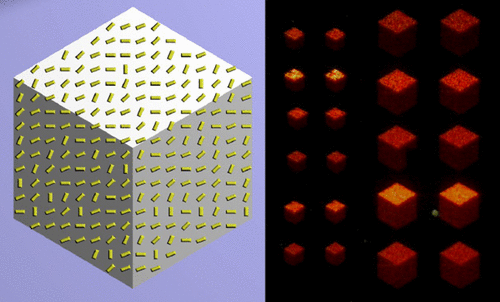Adapting a technique from 3D computer graphics, researchers from King's College London, working with colleagues at Rheinische Friedrich-Wilhelms-Universität Bonn, have developed flat surfaces which appear as realistic 3D objects in normal illumination. The technique involves engineering features into the surface that are smaller than the wavelength of light, which controls how light is reflected by the surface.

The King’s team claims that the images encoded onto its surfaces — known as metasurfaces — are more realistic than holograms or the current state of the art in 3D cinema; but unlike holograms, which need a laser to be viewed, these metasurfaces work under conventional lighting or daylight. As well as having potential for new forms of 3D art and in marking items for security purposes, metasurfaces such as these could enable the construction of devices to replace heavy and bulky lenses in satellites and in portable electronic devices, they add.
The research used a technique borrowed from a 3D computer graphics technique called normal mapping, which simulates how light and shade changes on a solid object when an illumination source is moved. To test the concept, the team fabricated a layered metasurface that imitated the lighting ands shading effects of the surfaces of a solid cube, as they explain in the American Chemical Society journal Nano Letters.
Prof Anatoly Zayats of KCL, one of the paper’s authors, commented: “Metasurfaces are amazing. They open up unprecedented freedom in directing and manipulating light. One might ultimately imagine a TV screen which appears exactly the same as you move around it, or a new movement of 3D art.”
But art is only one application. By making a flat surface act as though it were optically convex, a metasurface could mimic the properties of the complex curves of a camera lens, allowing control of angle and depth of field in a far smaller space, and with dramatically reduced weight, opening up applications in handheld devices, where space is at a premium, and in satellites, where weight reduction is vital.
“The normal mapping demonstrated with our metasurface is a completely new concept, but it could have very important implications for a wide range of optical industries, both in introducing new functionality and making products smaller and lighter,” commented research leader Alexander Minovitch, a Royal Society Newton International Fellow at King’s College London.




Red Bull makes hydrogen fuel cell play with AVL
Formula 1 is an anachronistic anomaly where its only cutting edge is in engine development. The rules prohibit any real innovation and there would be...